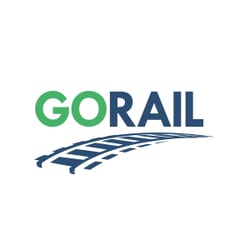 With the help of Michigan Railroads Association, Jeffrey Mosher spends some time of Wednesday March 13, 2019, MI Railroad Day with a pair of State Senators and a State Representative from across Michigan and across party lines.
With the help of Michigan Railroads Association, Jeffrey Mosher spends some time of Wednesday March 13, 2019, MI Railroad Day with a pair of State Senators and a State Representative from across Michigan and across party lines.
His interviews about railroads in Michigan are:
Segment 1: St. Senator Roger Victory, Michigan's 30th Senate District Ottowa County.
Segment 2: St. Rep. Robert Wittenberg, Michigan's 27th House District, Oak Park, MI region,
Segment 3: St. Senator Wayne Schmidt, Michigan's 37th District, Grand Traverse County,

MOVING THE ECONOMY MITIGATING POLLUTION KEEPING COMMUNITIES SAFE
Freight railroads provide safe and efficient transportation for nearly every sector of the economy, playing a fundamental role in America’s economic growth. Moving freight by rail also benefits the public by mitigating air pollution, conserving fuel, improving safety, reducing highway congestion and saving taxpayer dollars.
Freight rail is the engine that keeps our economy strong. Freight rail is one of the country’s most essential industries, providing a foundation on which many other industries rely for their own success. Freight rail connects farmers, miners and manufacturers to markets across the country and around the world, and is a crucial part of the integrated network of trains, trucks and barges that ships around 54 tons of goods per American each year.
•America’s freight railroads operate almost exclusively on infrastructure they own, build, maintain and pay for themselves — a vast network of 140,000 miles.
• From the food on our tables to the cars we drive to the shoes on our feet, railroads account for over 40 percent of the nation’s intercity freight volume — more than any other transportation mode.
•Railroads spend an average of 19 percent of revenue on capital expenditures — six times more than the average U.S. manufacturer. Over the last three years, freight railroads spent an average of $25 billion on infrastructure and equipment to maintain and expand their network. From 1980 - 2018, they have spent more than $685 billion of their own funds on locomotives, freight cars, tracks, bridges, tunnels and other equipment and technology.
•According to Towson University’s Regional Economic Studies Institute, Class I railroads supported over 1.1 million jobs, $219.5 billion in economic output and $71.3 billion in wages in 2017 alone, while also creating nearly $26 billion in total tax revenues.
• In 2017, freight railroads employed about 170,000 workers whose average compensation exceeded $125,000 — 60 percent higher than the average U.S. worker. Over 80 percent of Class I railroad employees are unionized and nearly 20 percent are veterans. 
FAST FACTS: RAIL INVESTMENTS BENEFIT AMERICANS
•Railroads haul about one-third of all U.S. exports and move nearly 75% of the new cars and light trucks purchased in the U.S. each year. (AAR, 2018)
• Freight rail offers savings of about 23% versus trucking. (AASHTO, 2018)
• Average U.S. freight rail rates (measured by inflation-adjusted revenue per ton-mile) were 46% lower in 2017 than in 1981, so the average rail shipper can move almost twice as much freight for about the same price it paid more than 35 years ago. (AAR, 2017)
• The companies that supply railroads with equipment, services and technology employ 125,000 workers and contribute more than $74.2 billion in GDP. (RSI, 2018)
• Total freight demand is expected to grow roughly 42% by 2040. (USDOT, 2015)
•A one percent mode-shift from highway transport to freight rail would generate $19.3 billion in benefits over 30 years — 44% accrued to shippers in lower transportation cots and 66% to the rest of society in cleaner air, less roadway congestion and improvements in safety. (AASHTO, 2018) Conserving fuel, mitigating pollution. Freight rail is the cleanest, most efficient, and most environmentally sound way to move freight over land. From advanced locomotive technology to zero-emission cranes, freight railroads leverage technology to minimize their environmental impact.
• U.S. freight railroads can move one ton of freight 479 miles on a single gallon of fuel, on average.
• Railroads are, on average, four times more fuel efficient than trucks. Moving freight by rail instead of truck lowers greenhouse gas emissions by 75 percent.
• Freight rail accounts for only 0.5 percent of greenhouse gas emissions in the U.S., and just 2 percent of transportation-related sources, according to the U.S. Environmental Protection Agency.
•One train can carry the freight of several hundred trucks — reducing highway gridlock, the cost of maintaining existing highways and the pressure to build expensive new highways.
• Since 1980, freight railroads have nearly doubled the amount of freight moved while using about the same amount of fuel. Keeping communities safe. There is a direct correlation between the increase in rail network investments and enhanced safety performance.
• Recent years have been the safest on record for the rail sector. According to the Federal Railroad Administration, since 2008, the train accident rate is down 23 percent, the equipment-caused accident rate is down 16 percent, the track caused accident rate is down 40 percent to an all-time low, the derailment rate is down 23 percent and the hazmat accident rate is down 41 percent.
• In 2017, more than 99.999 percent of rail hazardous materials shipments reached their destinations without a release caused by an accident.
• Railroads rely on technologies including sonar, infrared and ultrasound to monitor the condition of passing trains and the track beneath them while drones assist in bridge inspection and extreme weather incidents.
• Intelligent sensors positioned across the rail network gather data on the track, locomotives, and the components of 1.6 million rail cars. Analysis of these data sets allows railroads to move beyond detecting existing safety issues to predicting and preventing them.
• At the end of 2018, the nation’s largest freight railroads were operating positive train control (PTC) across 83.2 percent of the required routemiles nationwide. PTC is a set of highly advanced technologies designed to automatically stop a train before certain human-error accidents occur. The system will be fully active and interoperable by 2020.
• Freight railroads help train tens of thousands of emergency responders each year with programs and outreach efforts, including programs at the Transportation Technology Center, Inc. (TTCI). Railroads also collaborate with first responders and other authorities to swiftly and effectively carry out their emergency response plans.
• The AskRail app provides over 25,000 first responders from all 50 states and eight Canadian provinces immediate access to accurate, timely data about what type of hazmat a rail car is carrying. 425 3rd St SW, Ste 940 Washington, DC 20024 202-808-3230 www.gorail.org













